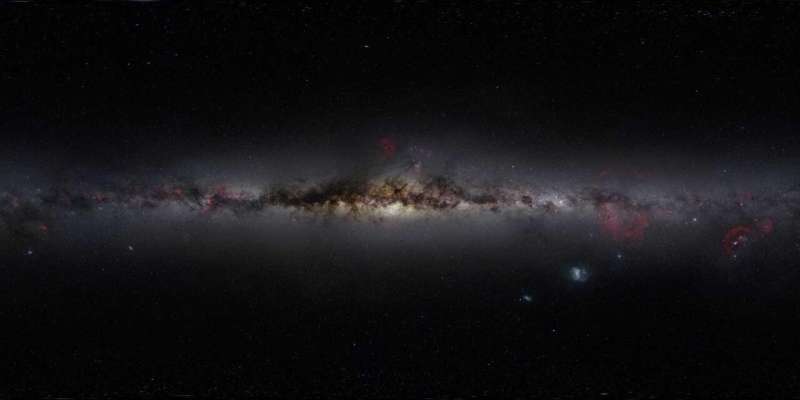New telescopes aim to detect extraterrestrial intelligence

A team of astronomers led by UC San Diego physicist Shelley Wright is deploying a pair of telescopes that will constantly search the nighttime sky for signals from intelligent life in our galaxy.
Project researchers from UC San Diego, UC Berkeley, University of California Observatories and Harvard University recently installed the two prototype telescopes at Lick Observatory near San Jose. They are the first of hundreds of telescopes planned to be installed as part of a project called Panoramic SETI or PANOSETI, for Pulsed All-sky Near-infrared Optical SETI. Wright, an associate professor of physics at UC San Diego, serves as lead investigator.
When finally assembled, PANOSETI will be the first dedicated observatory capable of constantly searching for flashes of optical or infrared light. Such pulsed signals occurring on nanosecond-to-second time scales, may be from either artificial origin (e.g., extraterrestrial communication) or astrophysical phenomena (e.g., counterparts to fast-radio bursts).
Wright explained that the deployment of the two PANOSETI telescopes offers astronomers a new window into how the universe behaves at nanosecond timescales.
PANOSETI explores the universe at billionth-of-a-second time scales—a time scale that has not been examined well to date, agreed Dan Werthimer, chief technologist at UC Berkeley's SETI Research Center and co-investigator.
"When astronomers examine an unexplored parameter space, they usually find something surprising that no one predicted," he said. "PANOSETI could discover new astronomical phenomena or signals from E.T."
But how likely is it that scientists will detect extraterrestrial signals with PANOSETI?
"The short and correct answer is we have no idea on the likelihood of detection," said Wright. "With PANOSETI we will be observing an unexplored phase space for SETI and astronomical observations. Our goal is to make the first dedicated SETI observatory that is capable of observing the entire visible sky all of the time."
Wright said that the entire project team is excited to embark on the ambitious program that has others talking. For example, according to a recent article in The Guardian, Jill Tarter, an emeritus researcher at the SETI Institute, discussed PANOSETI at the recent American Association for the Advancement of Science (AAAS) conference in Seattle. Tarter noted that with its anticipated vast view of the sky, the instrument is positioned to uniquely spot signals like flashes from faraway lasers.
"The goal is to basically look for very brief but powerful signals from an advanced civilization. Because they are so brief, and likely to be rare, we plan to check large areas of the sky for a long period of time," said Werthimer, who has been involved with SETI for the past 45 years.
The initial pair of PANOSETI telescopes marks a critical milestone for testing the system and making unique observations enabling new discoveries of astrophysical transient and variable phenomena. With support from Lick Observatory staff, UC San Diego and UC Berkeley researchers can operate these dedicated telescopes and the Astrograph Dome they sit in from their campus locations. Lick Observatory is owned and operated by the University of California Observatories (UCO) for the benefit of astronomers across the UC system.
PANOSETI began development in 2018, aiming to create a dedicated optical SETI observatory to image the entire observable sky—approximately 10,000 square degrees—instantaneously. The final project plans to generate hundreds of telescopes to achieve this enormous sky coverage. What distinguishes the program is that a single PANOSETI telescope images 10 degrees by 10 degrees. For reference, the Earth's moon measures one-half degree in size. Currently, the team is characterizing the night sky and continuing to develop its large observatory mission.
PANOSETI's final design will feature a dedicated observatory at each of two locations. Each observatory will contain 80 of these unique telescopes. Site selection is underway, and the research team hopes to begin observatory construction in the next year.
Provided by University of California - San Diego





















